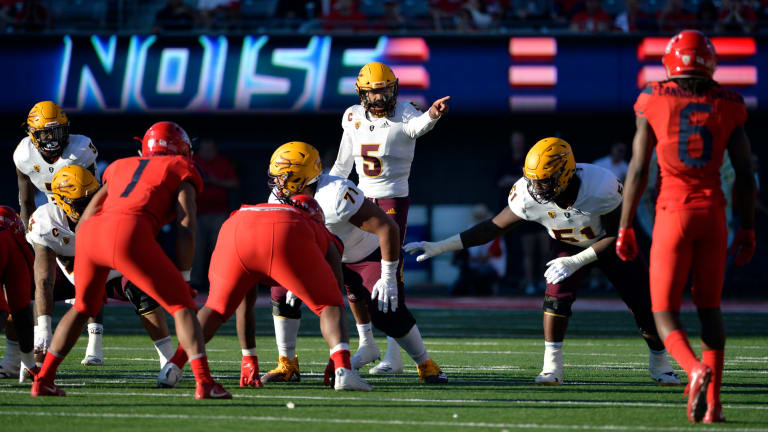
Hawaii's offense poses challenge to Arizona in season opener

Arizona football opens at Hawaii this Saturday in Week “Zero” of the 2019 college football season. Despite being an early 11-point favorite, the Wildcats will need to bring their A-Game on both sides of the football to avoid the type of anticipated shootout that could quickly devolve into a wrong side of the scoreboard blowout.
Kevin Sumlin, Arizona’s second year coach, has been preaching discipline on and off the field this offseason. He touted the team’s improvement at Pac-12 Media Day, highlighted by a solid team G.P.A. and enhanced focus in everything from film sessions to on-field drills.
The Rainbow Warriors finished ninth nationally in passing last season and return an experienced offensive line that features a combined 70 starts. Although Arizona’s defensive line has undergone a positive overhaul (Read Gimino's take on Arizona's defensive line), it’s difficult to imagine the Wildcats finding ways to apply enough pressure in the pocket to disrupt Hawaii’s Run-n-Shoot offense that passed for more than 4,000 yards and 42 touchdowns against only 12 interceptions in 2018.
Perhaps they have already figured it out, and perhaps they will show it on Saturday, but in recent years Arizona’s defense has been unable to defend the short-strike passing attack. Cornerbacks have given up too much space and linebackers have been tripped up in defending the crossing routes. All of this exacerbated by lack of a consistent pass rush unless the Wildcats commit 5 or 6 on the blitz.
With limited exposure to live practices, nobody in the media has any idea how much Arizona’s defense has improved in these areas.
Granted, Arizona will counter with its own potent offense, led by the dynamic duo of all-everything quarterback Khalil Tate and the shifty running style of J.J. Taylor. Combined, the two offenses are capable of totaling 80 points or more. However, one or two miscues at the wrong time could derail any hope of a victory, especially if Arizona’s defense isn’t getting enough stops to create a cushion.
Defensively, Arizona needs to find a way to disrupt the usually efficient Rainbow Warriors by making tackles, increasing deflections, and avoiding costly penalties that extend drives. A season ago, there were times when 3rd-and-15 might as well have been 2nd-and-1 as these key plays would result in an opposing receiver flashing across the middle of the field wide open for significant, back-breaking gains. If this happens Saturday, on the road, in what will undoubtedly be a windy, hostile environment, then the pressure to execute and keep pace with Hawaii will fall squarely on the offense. One or two mishaps on that side of the ball and suddenly the Wildcats can be the team scratching its head on the sidelines.
It happens far too often at the collegiate level, particularly in the first few games of the season.
One team is on point, while the other is struggling to simply fasten their chin straps.
In 2018, Arizona opened the season against BYU, at home, was outscored 21-0 in the third quarter and dropped a close one, 28-23. A week later, the Wildcats gave up the game’s first 38 points and were routed at Houston, 45-18.
Bad things happened that quickly.
Hawaii, despite being a home underdog, is capable of such a performance if Arizona does not instill its will, play disciplined football, execute, and find ways to contain a Rainbow Warriors offense equally as explosive as their own.
If they do, fans will be smiling. If they do not, fans will again question everything positive they have read or heard about the Wildcats this summer.